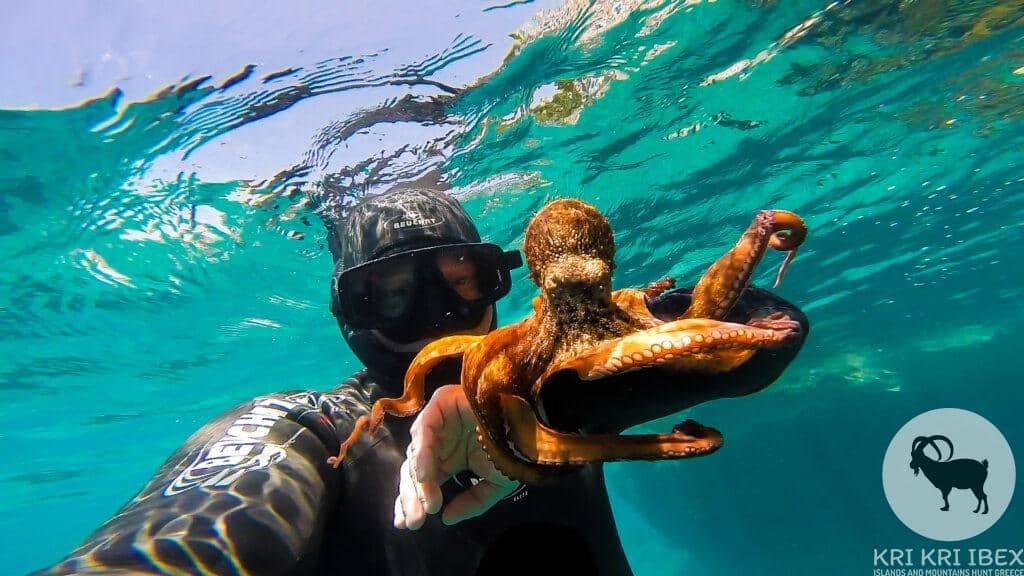
Vzrušenie z rybolov s harpúnou v Grécku je pozoruhodný sám o sebe. Ak chcete uspieť, musíte zadržať dych a mať výbornú mušku a pevné ruky. Nie je povolené používať vzduchové harpúny. Možno sa vám oplatí odvaha, hoci to môže byť riskantné. Ak sa pri potápaní cítite bezpečne, zažijete podmorské prenasledovanie ako žiadne iné. Každá rybárska výprava by mala zahŕňať zdravú dávku Grouper a Snapper, ale existuje najmä jeden druh, ktorý je pre lov s harpúnou tvrdým súperom, a to z dobrého dôvodu. Dentex sú vzácnym druhom rýb, ktoré majú okrem rýchlosti, sily a ostrých tesákov aj mimoriadne opatrný postoj. To znamená, že ich lov si vyžaduje nielen fyzickú silu, ale aj inteligenciu.
Obmedzenia potápania v Grécku sú veľkým problémom najmä pre potápačov, ktorí sa zaujímajú o staroveké vraky lodí a archeologické náleziská. Grécke hospodárstvo a cestovný ruch podporuje nový zákon, ktorý odstraňuje mnohé obmedzenia pre potápačov. Umožňuje potápanie bez sprievodu na mnohých archeologických lokalitách a vrakoch lodí, ako aj na vrakoch starších ako 50 rokov. Staroveké vraky na gréckych vodných cestách budú sprístupnené po tomto lete vrátane mnohých vrakov, ktoré sa potopili počas druhej svetovej vojny. Okrem archeologického parku v zálive Messina Navarino bude otvorený aj park oproti Methoni na ostrovčeku Sapientza.
Kapitán Vokadinov je licencovaný inštruktor potápania, takže ak si vyberiete výlet so šnorchlovaním do archeologického parku, môžete si byť istí, že ste v dobrých rukách. vraky lodí v okolí ostrova Sapientza. Šnorchlovacie vybavenie je čiastočne k dispozícii. Ak chcete, musíte si priniesť neoprény, masky a plutvy. Alebo si ich môžete kúpiť alebo prenajať na mieste.



Okolo roku 1920 objavili miestni rybári archeologické predmetyvrátane úlomkov mramoru v plytkej vode pri myse Karsi, severne od Methoni, oproti Sapienze. V roku 1925 právnik/historik Dionisios Potaris (1860-1932) objavil a zdokumentoval "mramory" po tom, čo sa riadil indíciami miestnych rybárov. Tieto "mramory" sa nachádzajú v lokalite 50 - 60 m od severného pobrežia Sapienzy v hĺbke 6 - 7 m a 10 m od mysu Spitha. Vstroskotanie stĺpov' obsahuje rozptýlené rôzne segmenty zo stĺpov, ktoré sú zarovnané a umiestnené na morskom dne. Iba jeden z nich 34 mramorových úlomkov je neporušený, s výškou 8 m a priemerom 0,90 m. Ďalších 28 je zoskupených a zvyšných šesť je rozmiestnených vo vzdialenosti 60 m. Toto vrakovisko bude počiatočné archeologické nálezisko, ktoré možno preskúmať pod vodou. Druhý vrak lode bol nájdený v blízkosti vraku stĺpov v severnej časti Ostrov Sapienza v hĺbke 15 m. vrak lode leží na dne oceánu. Medzi nákladom lode sú aj sarkofágy s kamennými rakvami. Jeden sarkofág je rozbitý, pravdepodobne v dôsledku stroskotania lode. Sarkofágy majú rozmery 2,20 x 0,80 m a sú na nich reliéfy a jednoduchá lineárna výzdoba. Vrak lode sa datuje do tretieho storočia nášho letopočtu. V roku 1970 uskutočnila EUA archeologický výskum vraku lode. Vrak sarkofágov a vrak lode so stĺpmi sa skúmal v rámci vzdelávacieho programu, ktorý iniciovala EUA a Bolonská univerzita v spolupráci s profesorom A. Nannetim.

Majú kozy schopnosť plávať v oceáne? Odpoveď je áno, pokiaľ vlny nie sú príliš veľké. Kozy sú od narodenia prirodzenými plavcami, ktorí si musia nájsť potravu vo voľnej prírode. Divoké kozy budú plávať aby sa dostali na nové pastviny, aj keď si to vyžaduje plávanie. Domáce kozy pravdepodobne nebudú plávať a väčšina z nich sa tomu vyhne. Domáce kozy však nebudú váhať plávať, ak sa budú musieť dostať na nové pasienky. Divoké kozy vedia plávať dlhšie a ďalej ako domáce kozy.
V Stredozemnom mori sa vyskytujú tri druhy morských korytnačiek. Korytnačka laločnatá (Caretta caretta) a korytnačka zelená (Chelonia mydas), zatiaľ čo korytnačka kožnatá (Dermochelys coriacea) je príležitostným návštevníkom.
Jaskynné potápanie je potápanie pod vodou v jaskyniach naplnených vodou.
Monachus monachus, známy aj ako Stredomorský tuleň mníšskysa vyskytuje v oblasti Stredozemného mora a na severozápadnom pobreží Afriky.
Milujem chobotnice v Stredozemnom mori. Sú inteligentné, rozšírené a zaujímavé svojimi pozoruhodnými maskovacími schopnosťami.
Alebo len potopený poklad.
| Cookie | Dĺžka trvania | Popis |
|---|---|---|
| cookielawinfo-checkbox-analytics | 11 mesiacov | Tento súbor cookie sa nastavuje pomocou zásuvného modulu súhlasu so súbormi cookie GDPR. Súbor cookie sa používa na uloženie súhlasu používateľa so súbormi cookie v kategórii "Analytika". |
| cookielawinfo-checkbox-functional | 11 mesiacov | Súbor cookie je nastavený na základe súhlasu s používaním súborov cookie podľa GDPR na zaznamenanie súhlasu používateľa so súbormi cookie v kategórii "Funkčné". |
| cookielawinfo-checkbox-necessary | 11 mesiacov | Tento súbor cookie sa nastavuje pomocou zásuvného modulu súhlasu so súbormi cookie GDPR. Súbor cookie sa používa na uloženie súhlasu používateľa so súbormi cookie v kategórii "Nevyhnutné". |
| cookielawinfo-checkbox-others | 11 mesiacov | Tento súbor cookie sa nastavuje pomocou zásuvného modulu súhlasu so súbormi cookie GDPR. Súbor cookie sa používa na uloženie súhlasu používateľa so súbormi cookie v kategórii "Iné. |
| cookielawinfo-checkbox-performance | 11 mesiacov | Tento súbor cookie sa nastavuje pomocou zásuvného modulu súhlasu so súbormi cookie GDPR. Súbor cookie sa používa na uloženie súhlasu používateľa so súbormi cookie v kategórii "Výkon". |
| viewed_cookie_policy | 11 mesiacov | Súbor cookie je nastavený zásuvným modulom súhlasu s používaním súborov cookie GDPR a používa sa na uloženie informácie, či používateľ súhlasil s používaním súborov cookie. Neukladajú sa v ňom žiadne osobné údaje. |